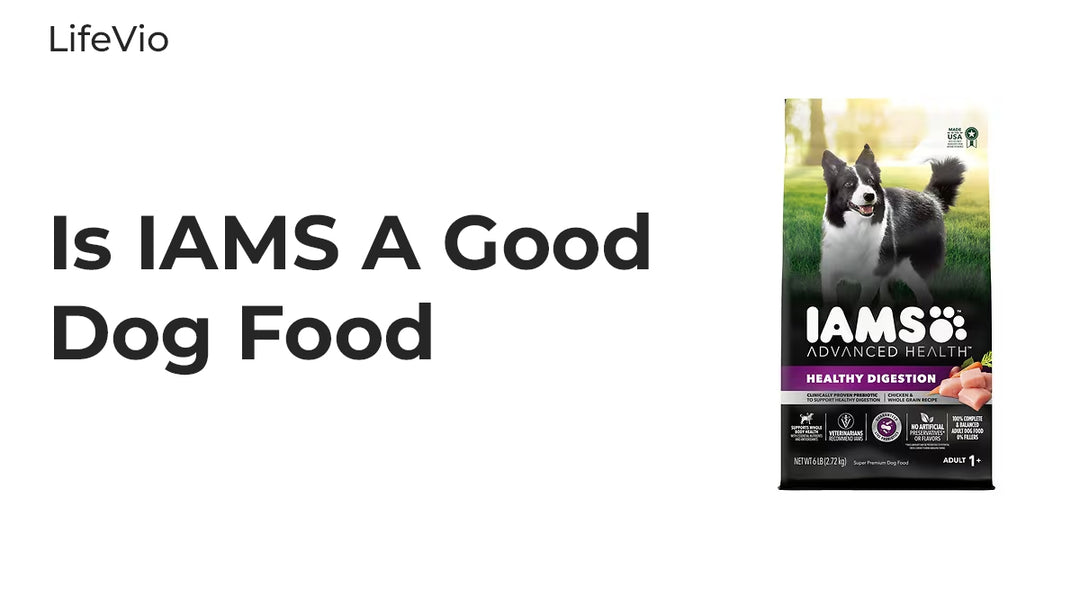How Much Protein should a Dog Food Have?
When it comes to dog nutrition, one of the most important factors to consider is the amount of protein in their food. Protein is essential for maintaining healthy muscles, skin, hair, and overall body function. However, with so many different types of dog food available, it can be challenging to determine how much protein your furry friend needs. In this comprehensive guide, we'll explore the importance of protein in a dog's diet, how much protein various life stages and breeds require, and how to choose the best high-protein dog food for your pet.
Why is Protein Important for Dogs?
Protein is a crucial component of a balanced dog diet. It plays a vital role in various bodily functions, including:
- Building and repairing muscles, tissues, and organs
- Producing enzymes, hormones, and antibodies
- Maintaining healthy skin, hair, and nails
- Providing energy
Dogs require essential amino acids that can only be obtained through their diet, as their bodies cannot produce them naturally. Animal-based proteins, such as meat, fish, and eggs, are considered "complete proteins" because they contain all the essential amino acids in the right proportions.
AAFCO Protein Recommendations for Dogs
The Association of American Feed Control Officials (AAFCO) sets guidelines for the minimum amount of protein required in dog food. These guidelines ensure that commercially available dog foods meet the nutritional needs of dogs at different life stages.
| Life Stage | Minimum Protein (% dry matter) |
| Adult | 18% |
| Growth | 22% |
| Reproduction | 22% |
It's important to note that these are minimum requirements, and some dogs may benefit from higher protein levels depending on their breed, size, activity level, and health status.
Protein Requirements by Life Stage
A dog's protein requirements vary depending on its life stage. Let's take a closer look at how much protein dogs need at different stages of their lives.
Puppies
Puppies have higher protein requirements compared to adult dogs because they are growing and developing rapidly. The AAFCO recommends a minimum of 22% protein (on a dry matter basis) for puppies. However, many puppy foods contain higher levels of protein, typically ranging from 25% to 30%.
When choosing a puppy food, look for high-quality animal protein sources, such as chicken, lamb, or fish, listed as the first ingredient. Avoid puppy foods that rely heavily on plant-based proteins, as they may not provide the optimal balance of essential amino acids.
Adult Dogs
Adult dogs require a minimum of 18% protein (on a dry matter basis) according to AAFCO guidelines. However, this is just a minimum, and many adult dog foods contain higher levels of protein, typically ranging from 20% to 30%.
When selecting an adult dog food, consider your dog's breed, size, and activity level. Highly active dogs, such as working or sporting breeds, may benefit from higher protein levels to support their energy needs and maintain lean muscle mass. On the other hand, less active or senior dogs may require slightly lower protein levels to maintain a healthy weight and avoid putting excessive strain on their kidneys.
Senior Dogs
As dogs age, their metabolism slows down, and they may become less active. While there is no specific AAFCO guideline for senior dog protein requirements, it's generally recommended to maintain a protein level similar to that of adult dogs, around 18% to 25%.
Some senior dogs may benefit from slightly higher protein levels to help maintain muscle mass and support overall health. However, dogs with certain health conditions, such as kidney disease, may require a lower-protein diet to reduce the workload on their kidneys. Consult with your veterinarian to determine the best protein level for your senior dog's individual needs.
Protein Requirements by Breed Size
In addition to life stage, a dog's breed size can also influence its protein requirements. Let's examine the protein needs of small, medium, and large breed dogs.
Small Breed Dogs
Small breed dogs have a higher metabolism compared to larger breeds, which means they require more calories per pound of body weight. As a result, they may benefit from higher protein levels to support their energy needs and maintain lean muscle mass.
When choosing a food for your small breed dog, look for options that contain at least 25% protein (on a dry matter basis) from high-quality animal sources. Some small breed-specific formulas may contain even higher protein levels, up to 30% or more.
Medium Breed Dogs
Medium breed dogs generally have moderate energy requirements and can maintain a healthy weight on a diet with a balanced protein level. Look for dog foods that contain 22% to 26% protein (on a dry matter basis) from high-quality animal sources.
As with all dogs, consider your medium breed dog's activity level and adjust the protein content accordingly. More active dogs may benefit from slightly higher protein levels, while less active dogs may require a bit less.
Large Breed Dogs
Large breed dogs have unique nutritional needs, especially during their growth phase. To support healthy growth and development, large breed puppies require a diet with a lower calcium content and a balanced protein-to-fat ratio.
The AAFCO recommends a minimum of 22% protein for large breed puppies, but many large breed puppy foods contain slightly higher levels, around 23% to 25%, to support their growth and development.
For adult large breed dogs, a protein level of 20% to 24% (on a dry matter basis) is generally sufficient to maintain lean muscle mass and support overall health. However, highly active or working large breed dogs may benefit from slightly higher protein levels.
Choosing High-Protein Dog Food
When selecting a high-protein dog food, there are several factors to consider:
- Protein Source: Look for dog foods that list high-quality animal proteins, such as chicken, lamb, beef, or fish, as the first ingredient. Avoid foods that rely heavily on plant-based proteins or by-product meals.
- Protein Content: Check the guaranteed analysis on the dog food label to determine the protein content. Keep in mind that the percentages listed are on an "as-fed" basis, which includes moisture. To compare protein levels across different brands and formulas, convert the percentages to a dry matter basis.
- Balanced Nutrition: High-protein dog food should also contain an appropriate balance of other essential nutrients, such as fats, carbohydrates, vitamins, and minerals. Look for foods that meet AAFCO guidelines for complete and balanced nutrition.
- Life Stage and Breed Size: Choose a high-protein dog food that is appropriate for your dog's life stage (puppy, adult, or senior) and breed size (small, medium, or large).
- Digestibility: Select dog foods made with high-quality, easily digestible ingredients to ensure your dog can efficiently utilize the protein and other nutrients in the food.
Conclusion
Protein is a vital component of a balanced dog diet, and the amount your dog needs depends on various factors, including life stage, breed size, and activity level. By understanding your dog's unique protein requirements and choosing a high-quality, high-protein dog food, you can help support their overall health and well-being.
Remember to always consult with your veterinarian when making changes to your dog's diet, especially if they have specific health concerns or dietary requirements. With the right nutrition and care, you can help your furry friend thrive and enjoy a happy, healthy life by your side.




